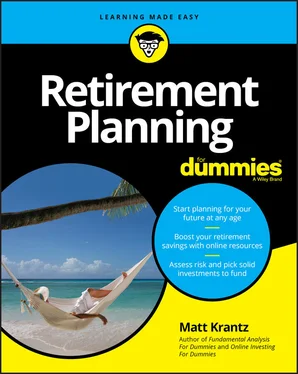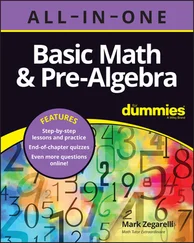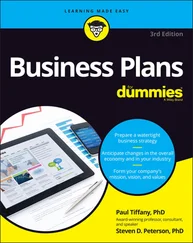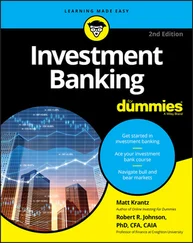Some of you may already fastidiously track your income and expenses, but most people don't. Fortunately, helpful (and almost automatic) ways exist to figure out where you're spending your money.
When it comes to tracking your money, you need to know a few things about your expenses:
Category: Classify what you're spending into groups, such as food, transportation, and housing. Then break down these groups further into subcategories. For example, food is composed of groceries and dining out, and transportation includes gas for your car and bus tickets. Keep in mind, too, that some of your costs are necessities (such as rent and groceries) and others are discretionary (for example, concert tickets and dining out).
Amount: Tally these costs. Even seemingly small expenses can add up over time.
Frequency: Some expenses are weekly, such as a grocery store run. Others occur monthly, such as utilities. And still others are due once or twice a year, such as property taxes. You might be feeling rich one month, only to be blindsided by a semi-annual auto insurance bill the next.
Tax deductibility: Some expenses might be associated with your business or deductible at tax time for other reasons. Keep track of tax-deductible expenses.
Savings: Okay, so savings isn’t an expense, but it’s part of your budget. Keeping track of how much you’re able to sock away helps you forecast your savings progress.
Taxes: Keep an eye on how much is withheld, or pulled out of your earnings, each pay period, so you understand how much of your income is going to the tax man.
Tracking your money’s every move
You’re probably thinking, “How the heck can I track all this with any kind of precision?” After all, if you’re like most people, you typically just whip out a credit card when you pay for something, toss the receipt, and worry about the bill later. Or you might be even less actively involved because you set your bills on auto payment and forget about them.
 Take any expense and divide it by 12 or even 24 and it doesn’t seem so bad. You might pause before you pony up $1,000 for a smartphone. But if it’s “only” $42 a month (for 24 months), that’s not so bad, right? Companies are onto this, and offer monthly fees and subscriptions for almost anything. And many of these fees are automatically billed to your credit card, so you might not even remember you’re paying them. These auto charges are like vampires, sucking away money from your retirement plan.
Take any expense and divide it by 12 or even 24 and it doesn’t seem so bad. You might pause before you pony up $1,000 for a smartphone. But if it’s “only” $42 a month (for 24 months), that’s not so bad, right? Companies are onto this, and offer monthly fees and subscriptions for almost anything. And many of these fees are automatically billed to your credit card, so you might not even remember you’re paying them. These auto charges are like vampires, sucking away money from your retirement plan.
I’m not going to tell you that your monthly Netflix subscription or daily run to Starbucks is a bad idea. Again, the way you use your money is up to you. I will, however, show you how to figure out what these things are costing you. Then it’s up to you to decide whether they’re worthwhile.
When you track your expenses, know that most fit into one of four main groups:
Overhead: You need food, clothing, and shelter. These items don't necessarily bring you joy, but they're required to survive. Rent or mortgage payments, groceries, and utilities are the biggest overhead line items.
Taxes: Another massive line item for people is Uncle Sam’s piece. Refer to the tax brackets in Table 2-1if you need a reminder.
Savings: As mentioned, you might not think of savings as an expense, but that’s how it functions in your budget.
Discretionary money: After you pay your other expenses, I hope money is left over for you to buy things or experiences you enjoy.
TABLE 2-12019 Tax Brackets
| Rate |
Single Individual, Taxable Income More Than |
Married and Filing Jointly, Taxable Income More Than |
Head of Household, Taxable Income More Than |
| 10% |
$0 |
$0 |
$0 |
| 12% |
$9,700 |
$19,400 |
$13,850 |
| 22% |
$39,475 |
$78,950 |
$52,850 |
| 24% |
$84,200 |
$168,400 |
$84,200 |
| 32% |
$160,725 |
$321,450 |
$160,700 |
| 35% |
$204,100 |
$408,200 |
$204,100 |
| 37% |
$510,300 |
$612,350 |
$510,300 |
Following are guidelines on how much you should be spending on the four main expense categories:
Overhead: 50 percent or less of income. Generally speaking, your housing spending should be 30 percent or less of your income. Add insurance, utilities, food, and other necessities, and the total should be about 50 percent or less of your income. If you can spend less on necessities, good for you.
Taxes: 20 percent federal plus state and local. Taxpayers on average paid 20 percent of their income on federal tax ( www.irs.gov/statistics/soi-tax-stats-individual-statistical-tables-by-size-of-adjusted-gross-income ). State income taxes range from 0 percent in seven states to up to 13.3 percent in California ( https://turbotax.intuit.com/tax-tips/fun-facts/states-with-the-highest-and-lowest-taxes/L6HPAVqSF ). Good retirement planning can help you lower the slice the taxman takes.
Savings: 10 percent to 15 percent. Most experts recommend socking away for retirement 10 to 15 percent of your pretax income. You’ll want to save more than that if you’re planning a big expense such as college for your kids, a new car, or the down payment on a home. Keep in mind that when you’re retired, you no longer need to keep a savings budget.
Discretionary: Whatever’s left, which is 15 percent to 20 percent if you follow the other guidelines. After paying everything else, have fun with the remaining money. You should choose what to do with your fun money.
As mentioned, your run rate is how much you spend now. You can calculate your run rate in several ways:
Paper and pencil: Yes, you could save your receipts and write down your expenses in a book. If you hate your computer, this method might work for you. But in this book, I skip this dead-tree approach because better ways exist for tracking your money.
Your bank’s online resources: Many banks put a lot of effort into boosting their website's budget feature. For some people, this approach suffices. Later, I show you the best way to use this feature.
Third-party apps and websites: There’s an app for that! You use apps to get from place to place and to order food. Why not control your spending with an app, too? An assortment of apps and associated websites can help you see how much you’re spending.
Spreadsheets: Third-party apps are slick but some come with a catch, charging a monthly fee or sharing your personal financial information. For some people, a good old-fashioned spreadsheet is all they need. I show you how to get started.
Using your credit card company or bank’s online resources
Using your credit card company or bank’s site to calculate your run rate requires minimal effort. The institution does most of the work for you, if you know where to look.
Plus, many banks and credit card companies are upping their game when it comes to giving consumers tools to track their money. Many will let you tabulate the amount you’re spending overall and by category. If you’re just jumping onto your credit card company’s site to pay your monthly bill, you might be missing out on an opportunity to learn more about your spending patterns.
If you log in to Citibank, a popular bank and issuer of credit cards, you’ll see a Spend Summary option. Click it and the screen shown in Figure 2-1 appears. You see the amounts you’re spending in specific categories, such as restaurants or entertainment. For most categories, you can drill down and get additional detail. You also see the total amount you spent. Most banks offer similar features.
Читать дальше

 Take any expense and divide it by 12 or even 24 and it doesn’t seem so bad. You might pause before you pony up $1,000 for a smartphone. But if it’s “only” $42 a month (for 24 months), that’s not so bad, right? Companies are onto this, and offer monthly fees and subscriptions for almost anything. And many of these fees are automatically billed to your credit card, so you might not even remember you’re paying them. These auto charges are like vampires, sucking away money from your retirement plan.
Take any expense and divide it by 12 or even 24 and it doesn’t seem so bad. You might pause before you pony up $1,000 for a smartphone. But if it’s “only” $42 a month (for 24 months), that’s not so bad, right? Companies are onto this, and offer monthly fees and subscriptions for almost anything. And many of these fees are automatically billed to your credit card, so you might not even remember you’re paying them. These auto charges are like vampires, sucking away money from your retirement plan.










